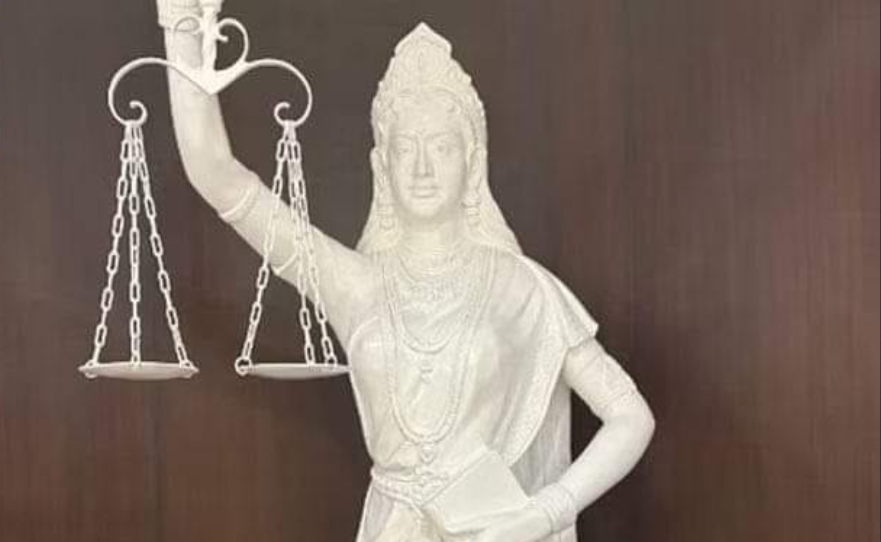‘Law is not blind’, a new statue attributed to the symbol of justice has been installed in the Supreme Court of India

Law is not blind: Usually, the statue outside the courts is seen to have a scale in hand and a blindfold to indicate that the law is blind, does not distinguish between rich and poor and that its justice is for all. For it is the same.
Why Remove the Blindfold?
In India, now the Supreme Court has changed the old statue in the court, in the old statue, Lady Justice was blindfolded and in the new statue, a woman without blindfold and holding scales in her hand is a symbol of justice (Lady Justice). ) statue has been installed in the court.
According to Indian media, the old colonial tradition has been done away with by installing a new statue and the statue of Lady Justice (goddess of justice) holding scales with open eyes says that the law is not blind, it sees all and it can see all.
Public and Cultural Reactions
The removal of the blindfold has ignited conversations across legal, cultural, and political circles. Many view it as a forward-thinking gesture, aligning with the Supreme Court’s role as a progressive institution that addresses not just legal questions but also societal changes.
On the other hand, some have raised concerns about the potential implications of this move, questioning whether it might dilute the traditional message of judicial impartiality. The new depiction could be seen as emphasizing that justice is actively looking at the facts and circumstances surrounding every case, rather than passively processing them.
Conclusion
The Supreme Court of India’s unveiling of a new Lady Justice statue without the blindfold marks a profound moment in the symbolic interpretation of law. By removing the traditional blindfold, the court is conveying that justice in India is not merely blind to circumstances but is instead well-informed, vigilant, and conscious of societal realities. Whether this change leads to a broader transformation in the global depiction of justice remains to be seen, but for now, it reflects the Indian judiciary’s commitment to adapting to the challenges of the modern world.